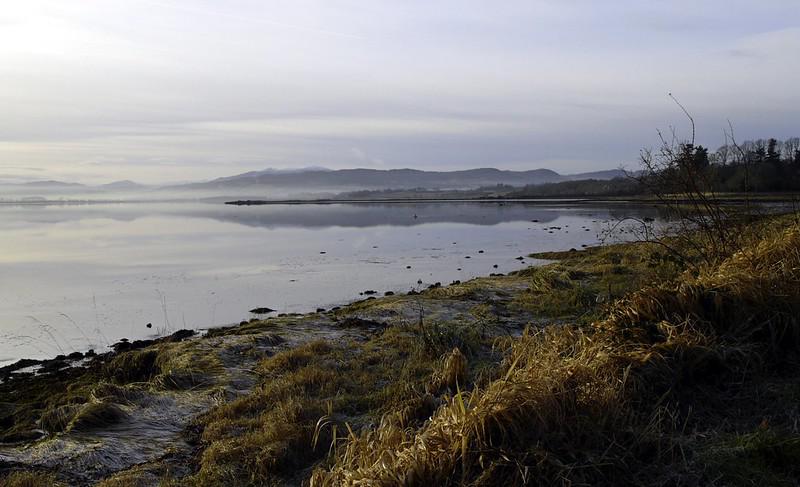A Stone’s Throw From Inverness
The outskirts of one of the largest towns in northern Scotland might not be the first place that springs to mind when thinking of places to see wildlife. However, Merkinch Nature Reserve is positioned right on the edge of the Beauly Firth – the outlet of both the River Beauly and River Ness. As such, it hosts a wide variety of wildlife, with many bird species attracted to the coastal areas, especially at low tide when sections of mudflat become exposed. Spring and summer are often the best times to visit, as the woodland will be lush with growth and wildflowers will be present in the picnic areas.

Scenically, the reserve also excels for an area that is so close to human habitation. There are views across the firth towards the Black Isle and westward to the Connon Strath. The reserve is also intersected by the Caledonian Canal, which can offer further points of interest. The area is unfamiliar to many people, even those who are local to Inverness, and this means it is often quiet and good for wildlife watching. The paths are well maintained and there are also wooden walkways that cross tidal pools, for a chance to get up close and personal with wading birds and herons.
Electric Blue
Alongside the marine attractions, Merkinch Nature Reserve’s woodland and swamp habitats are ideal for other species, some of which can be particularly appealing to the eye. The Common Kingfisher is one of Scotland’s most colourful birds and has the plumage to envy even the birds of paradise that live in more tropical regions. Its vibrant blue and orange feathers make it a beautiful sight, well worthy of a photograph or two. Kingfishers are most often seen as a quick flash of colour as they zip along waterways, however they will regularly be sighted perched on branches overhanging streams and rivers.

As indicated by their name, Kingfishers have a diet that is largely composed of fish. With their keen eyesight and large bills, they will locate fish swimming underwater and dive headfirst into the water in pursuit. This can be a fantastic sight to see and lucky visitors to Merkinch Nature Reserve might get the chance to watch these birds in action. In the northern part of the Kingfisher’s range, which includes Scotland, the species is migratory and will move south during the winter in search of warmer climes. For this reason, the warm summer months are the best time of year to see Kingfishers in Scotland. Top tip for spotting Kingfishers at Merkinch Nature Reserve: keep a look out for the birds perched in trees alongside the canal or above the freshwater pools.
Marine Marvels
Birdwatchers will feel right at home at Merkinch Nature Reserve, with the reserve being popular with many species of ducks and waders. Low tide exposes rockpools and mudflats, both of which provide ideal feeding grounds for these types of birds. Oystercatchers, Goosanders and Eider Ducks are some of the more notable species and visitors can be assured great views of herons feeding on the shoreline. As the reserve is positioned at a funnel point in the Beauly Firth, it can also provide sightings of marine mammals as they enter the firth from the open ocean. Porpoises and dolphins can be seen, as well as rare appearances from Pilot Whales. This species is actually a type of dolphin, despite its name, and is most often seen in Scotland’s waters during the summer months.
On land, the reserve is home to Roe Deer, which graze among the areas of woodland. The skies can be filled with swallows at certain times of the year, which can be delightful to watch as they swoop low over the water to catch insects. Other highlights include buzzards, frogs and rare sightings of weasels. Merkinch Nature Reserve is therefore a great place to see wildlife, and with it being so close to Inverness it can be an ideal getaway from the urban environment.
